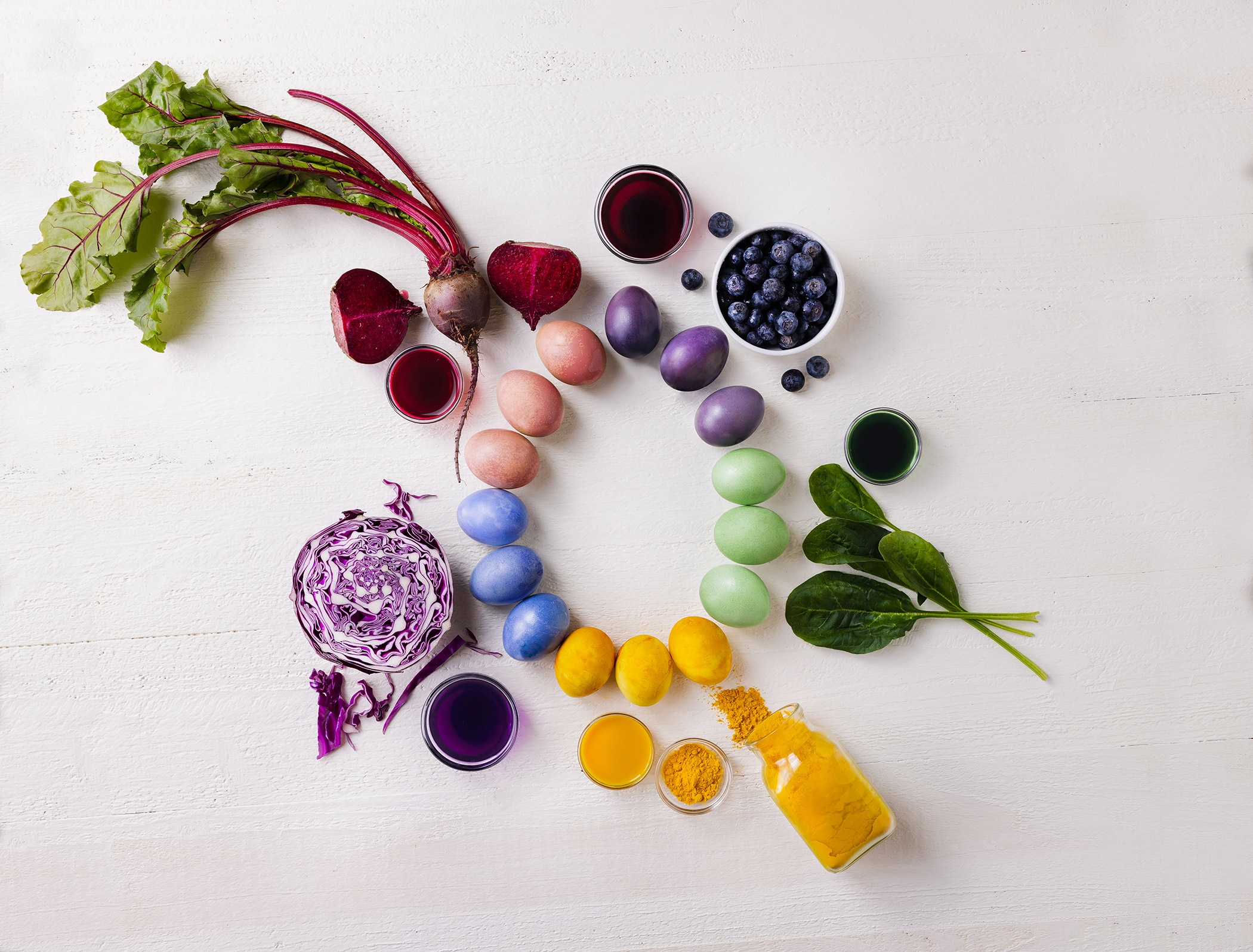

-
13 Ingredients
Make naturally-dyed eggs with ingredients right from your kitchen! Not only is it eco-friendly it is an activity the whole family can enjoy.
Ingredients and Directions
Directions
Prep your dye ingredients. Pre-cut the red cabbage and pre-shred the beets. Set aside the appropriate amounts of blueberries, spinach, and turmeric powder.
Add 2 Cups of water to a saucepan. Add one food item (purple cabbage, blueberries, etc.) and bring the water to a boil.
Note: Only one food should be added to the water at a time. You will need to repeat this process for each individual ingredient.
Once it comes to a boil, turn the heat down to low and simmer, cover, for 15 to 30 minutes.
After 15-30 minutes, check the water color by dripping some on a paper towel. The color of the dye should be a few shades darker than the color you want your egg to be.
When you are satisfied with the dye color, remove the pan from the heat and let the dye cool to room temperature.
Once cooled, pour the dye through a fine-mesh strainer into a medium or large bowl.
Add 2 TBSP of vinegar and stir into the dye.
Add 2-3 hard boiled eggs to the dye. Make sure the eggs are completely covered.
Put in the fridge and leave until the desired color is reached, up to 24 hours.
Once complete, dry the eggs, and then polish the color by massaging a little bit of oil onto the egg with a paper towel.
Because these are dyed with food it is very important they are stored in the refrigerator until it is time to eat or hide them.
Ingredients
- Hard-boiled white eggs (a dozen or more)
- Water
- 4 tbsp Turmeric
- 2 cups chopped red cabbage
- 2 cups shredded beets
- 2 cups blueberries
- 2 cups chopped spinach
- 5 medium/ large bowls
- Saucepan with lid (multiple, if you have them)
- Paper towels
- Fine-mesh strainer
- White distilled vinegar (1 tablespoon per cup of strained dye)
- Neutral oil, such as vegetable or grapeseed
Tips
Hard boil the eggs the night before beginning the process so that the eggs are completely cooled.
Use multiple saucepans while making the dye for a quicker total time.
To ensure food safety, eggs should be cooked until both the yolk and the white are firm. Consuming raw or undercooked eggs may increase your risk of foodborne illness, especially for those with certain medical conditions. For recipes that call for eggs that are raw or undercooked when the dish is served, use either pasteurized shell eggs that have been treated to destroy Salmonella, or use pasteurized egg products.

